
 Flash News
Flash News
HIV on the rise in Kosovo, 10 new cases recorded in five months
AMP checks at Kapshtica customs, drug found hidden in a vehicle
Insult and denigration, the Journalists Association of Albania condemns Ristan's attack on the "Piranha" journalist
"Land Rover" abandoned for two years in the Port of Durres, 3 firearms and cartridges found, 24-year-old wanted
Mavraj's message to the Rossoneri: Kosovo is ours forever. Now play football
Hot spring for the lek, the Albanian currency close to the historical record

The Albanian currency started the week with a further strengthening against the euro and the dollar on Monday, April 15, marking historic lows and signaling that the appreciation pressures already noted for years, continue to be in play. The euro was exchanged on Monday at 100.78 ALL while the dollar was exchanged at 94.58 ALL according to the average fixed exchange rate published by the Bank of Albania. Since the beginning of this year, the lek has fluctuated within a narrow band, from 100.78 to 104.5 lek per euro, with a 14-week average of 103.6 lek, while the last week has marked further strengthening.
The unusual performance of the national currency thus challenges the typical seasonal developments established over the decades, since the winter months have historically been periods of downward pressure on the lek due to increased imports, trade deficits and the withdrawal of profits from foreign direct investments. such as banks or mobile companies, which at this time of the year close the balances and transfer the balances to the countries of origin.
In fact, the foreign trade data for the first two months of this year suggest that the seasonal effect of the increase in the trade deficit is in force this year as well. According to data published by INSTAT, the trade deficit for January and February reached 72 billion ALL (about 720 million euros) with a 53% increase compared to the same period a year ago. Data on the outflow of foreign currency in the form of repatriation of profits are not yet available, but indirect data, such as rising mobile phone prices or declared bank profits (on historical record), suggest that this seasonal phenomenon is also present
The tourism sector, which may explain some of the extra currency in the market, does not seem to help much in this regard. Indeed, the number of foreign tourists who entered Albania during the first two months of this year has increased by 49% on an annual basis, reaching over 1 million people, but at the same time, the number of Albanian citizens who have traveled abroad, and consequently spent euros, increased to 1.15 million people, according to INSTAT. In short, the additional euros that should have come to Albania from foreign tourists have been compensated to a significant extent by the additional euros that Albanians have spent abroad.
The unusual strengthening of the lek started in 2016, when the euro cost 140 lek, while it accelerated during 2023, when the lek jumped from 113 lek to the euro at the beginning of the year, to 104 lek at the end of the year. It is assumed that the free exchange rate is self-adjusting. In short, as the lek strengthens, imports become cheaper and exports more expensive, and therefore the trend must at some point reverse itself. And logic dictates that the more the lek strengthens, the closer we must be to the point when cheap imports begin to eat away at the excess currency in the market. This is not happening anyway, at least not now./BIRN
Latest news




Trump warns of 'consequences' if Musk funds political rivals
2025-06-07 21:29:11


14-year-old falls from 6th floor of apartment in Tirana
2025-06-07 20:28:07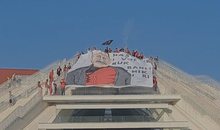
"Old enemies don't make new friends"
2025-06-07 19:52:58




HIV on the rise in Kosovo, 10 new cases recorded in five months
2025-06-07 17:47:59
Fire in the waste field in Vlora, Berisha: Monstrous crime against citizens
2025-06-07 17:27:40
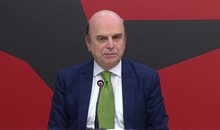
PL: The country's food safety system does not track food contamination
2025-06-07 16:40:37
Fire engulfs Vlora waste field again, mayor: Intentional
2025-06-07 16:20:06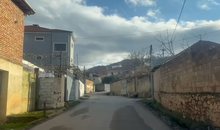
20-year-old man ends his life in Pogradec, police reveal details
2025-06-07 15:47:29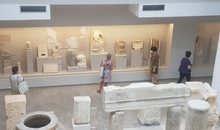
Tourism without heritage: Durrës opens the season with museums closed
2025-06-07 15:27:30

Gjendet një person i pajetë në Tiranë
2025-06-07 14:54:23
Detailed control, the rules that fans must follow in the Albania-Serbia match
2025-06-07 14:32:19
A heat wave will sweep across Albania next week
2025-06-07 14:10:18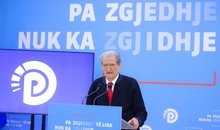
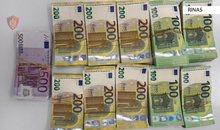
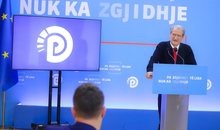
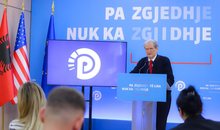


AMP checks at Kapshtica customs, drug found hidden in a vehicle
2025-06-07 12:15:26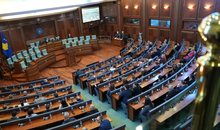
Kosovo Assembly fails to be constituted even after 28 attempts
2025-06-07 11:58:58


Oh Albania, you have no old age!
2025-06-07 11:05:01
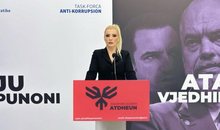

Mavraj's message to the Rossoneri: Kosovo is ours forever. Now play football
2025-06-07 10:10:52

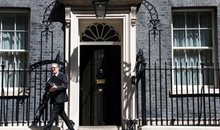
Why are Ukrainians being accused of arson at Keir Starmer's properties?
2025-06-07 09:16:24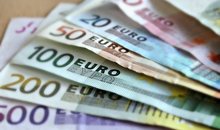
Foreign exchange, how much foreign currencies are sold and bought today
2025-06-07 09:04:55

Horoscope, what do the stars have in store for you today?
2025-06-07 08:31:29
Weather forecast for Saturday, here's what the temperatures will be like
2025-06-07 08:17:35
Posta e mëngjesit/ Me 2 rreshta: Çfarë pati rëndësi dje në Shqipëri
2025-06-07 08:01:23
Heavy metals in the Drin River, causes of cancerous diseases
2025-06-06 22:54:02


Works in Spaç, Lubonja: Destruction of collective and historical memory
2025-06-06 21:54:32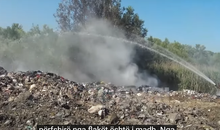
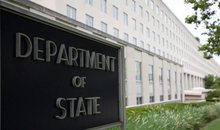
DASH: Balkans, part of American strategy for expelling migrants
2025-06-06 21:12:33

Ilir Shqina, a diplomat, and her business partner Grida Dumas were suddenly born
2025-06-06 20:21:46


Couple injured in Kavaja, police find firearm hidden in wall
2025-06-06 19:05:19
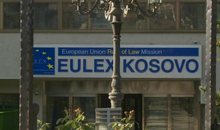
EULEX mandate in Kosovo extended until 2027
2025-06-06 17:58:20
These are the 3 zodiac signs that will be favored in the next decade
2025-06-06 17:50:52


Anthropology
2025-06-06 17:06:00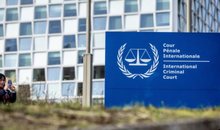
EU supports International Criminal Court after US sanctions
2025-06-06 16:47:51
Gonxhe ignores concerns about Spaçi and defends the continuation of the works
2025-06-06 16:31:42
Providing online services, report: Institutions, delays in update requests
2025-06-06 16:24:10
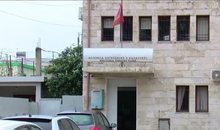
The head of the Vlora Cadastre is changed again
2025-06-06 15:58:49
With a rounded belly, Dafina Zeqiri enjoys the holidays with her partner
2025-06-06 15:36:06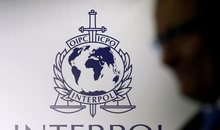

Foods that should not be missing from the Eid al-Adha table
2025-06-06 15:04:48
They exploited girls for prostitution in Vlora, 28-year-old arrested
2025-06-06 14:44:26
Israel warns of more attacks in Lebanon
2025-06-06 14:26:30
The race for the head of the BKH, the deadline for applications ends today
2025-06-06 14:15:18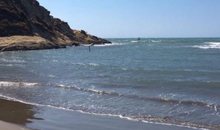
14-year-old girl in Vlora rescued after risking drowning at sea
2025-06-06 14:04:23
Challenge with Albania, Serbian team arrives in Tirana
2025-06-06 13:49:04
He injured the married couple in Rrogozhina, here is who the perpetrator is
2025-06-06 13:34:20

Berisha wishes Eid al-Adha: Blessings to your families and our nation
2025-06-06 13:09:28
He injured his neighbors with a gun, the perpetrator surrendered to the police
2025-06-06 13:02:47

Tom Cruise enters Guinness World Records
2025-06-06 12:38:48
From orange peels to bananas, discover the foods that help you with stress
2025-06-06 12:28:53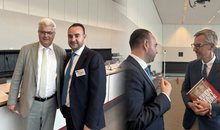


How did the feud between Donald Trump and Elon Musk start?
2025-06-06 11:52:32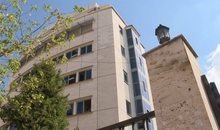
The prosecution sends 5 Kosovar citizens to trial for drug smuggling
2025-06-06 11:33:56
21-year-old injured with knife in Saranda
2025-06-06 11:24:10
Kosovo citizens flock to the Albanian coast, long queue from Morina
2025-06-06 11:11:07
Gunfire in Kavaja, shot at a married couple
2025-06-06 11:05:01
Merz: Bashkëpunim i ngushtë Gjermani-SHBA
2025-06-06 10:45:35
A marijuana plantation is found in Cakran, a 24-year-old man is arrested
2025-06-06 10:25:53
Gianni De Biasi shows the formula for how we can win against Serbia
2025-06-06 10:08:57
Hoxha: The CEC was one of the main architects of the destruction of free voting
2025-06-06 09:52:16
Foreign exchange, June 6, 2025
2025-06-06 09:33:01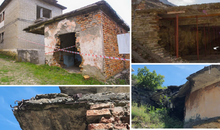


Accident on the new Kukes bridge, three vehicles collide
2025-06-06 08:43:06
Horoscope, what do the stars have in store for you today?
2025-06-06 08:28:14
Clear weather with few clouds, the forecast for this Friday
2025-06-06 08:13:54

